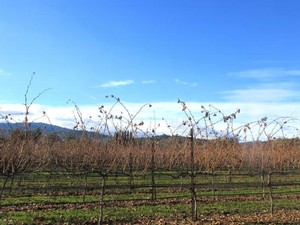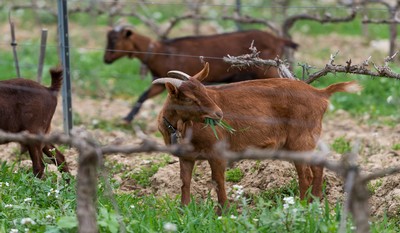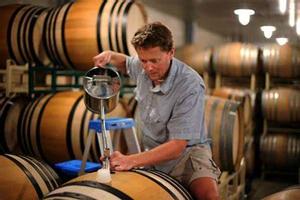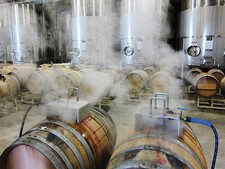Read Our
Winery Blog
A Year in a Winery... one month at a time... JANUARY
Wineries.... the glamorous end of farming! With all the finesse and sophistication that abounds in the wine industry, it is quite easy to forget that it all starts with simple farming. Nature has blessed us with a fruit that when handled correctly transforms into quite possibly the most studied, analyzed, and dissected consumable in existence.
Winemaking, at its most rudimentary level is actually quite simple, and the fundamentals of winemaking are essentially the same for everyone. The scenery, the scale, the peripherals may vary some, but the start and the finish are pretty much the same. So, that being said, let's take an excursion broken down into monthly increments of what is quite typical at a small family owned winery.
 JANUARY.
JANUARY.
Not the most exciting month to start with in the wine world, but for chronology sake we will follow the standard "Gregorian" Calendar, and for our purposes we will state that this outline is based on the cycle of a Sonoma County Green Valley Winery..... namely Ektimo.
January is a time of dormancy in the vineyard. Only the clingiest of shriveled leaves remain until a stiff breeze or sturdy rain strips the canes to just the bare branches rising up from the trunk and outstretched arms of the vine. From leaf fall to the beginning of growth in spring, grapevines are dormant and consist entirely of woody tissue. As temperatures fall, vines gradually become more cold hardy, and sugars are converted to starch to be stored for the winter, mostly in perennial structures such as roots and trunks. After leaf fall, vines continue to acclimate to cold weather, but no more carbohydrate accumulation occurs. Relatively little activity occurs during this period. Root growth can still occur unless soil temperatures are too cold to support growth, but it is the time of the year when vineyards remain silent.
 However, while all the local wildlife runs unopposed in the fields, there is always something going on in the wine cycle. I the winery, all the primary fermentations are done and the symphony of sounds that ring through the winery are all but silent. January is where attention to detail becomes the challenge of the team. During this time, tiny chemical changes are tediously monitored, and older wines delicately maintained to age beautifully and folow a delicate path to perfect maturity. Wines still in the tanks are analyzed and kept temperature stable to ensure freshness and peak quality.
However, while all the local wildlife runs unopposed in the fields, there is always something going on in the wine cycle. I the winery, all the primary fermentations are done and the symphony of sounds that ring through the winery are all but silent. January is where attention to detail becomes the challenge of the team. During this time, tiny chemical changes are tediously monitored, and older wines delicately maintained to age beautifully and folow a delicate path to perfect maturity. Wines still in the tanks are analyzed and kept temperature stable to ensure freshness and peak quality.

With hundreds, sometimes thousands of barrels, each one is regularly inspected, topped, and dated as having been serviced on a specific timeline. The inspections also include a visual to see if any flaws are being exposed where wine may be leaking through tiny fissures which inform us it is time for a barrel to be retired.

Cleanliness is important, and this is a task that must be fastidiously undertaken year round. Neglect sanitation at your peril as all those hard days and nights of work and effort can easily be erased if any bacterial growths take hold and contaminate your wines. Household cleansers are a no-no as in the wine world they can just as easily contaminate as clean. The most common cleaning agents you will see in a winery are water/steam, hydrogen peroxide and alcohol. Most of the water used in winemaking believe it or not is in cleaning not growing. Wineries have become quite adept at recycling the water used in sanitizing, moving it back into the water table where it replenishes aquifers and even irrigates vineyards.
On the hospitality side of things, January tends to be dreary, quiet and slow. Gone are the holiday celebrations of the preceding months, and as one of the slowest months for tourism, this is actually a brilliant time to have an in depth visit with your favorite winery. You will likely get the undivided attention of your host, and you can taste at your leisure and get informed on any expectations for the coming year. This slow period in mind, the Russian River Wineroad takes advantage of this time of year by presenting "Winter Wineland". It is a ticketed event in late January where the wineries show their more leisurely side for an event, and usually present the hearty wine selections to get you through those short days and long nights. Well, what else are you going to do in January?
So...... January, keep it clean.